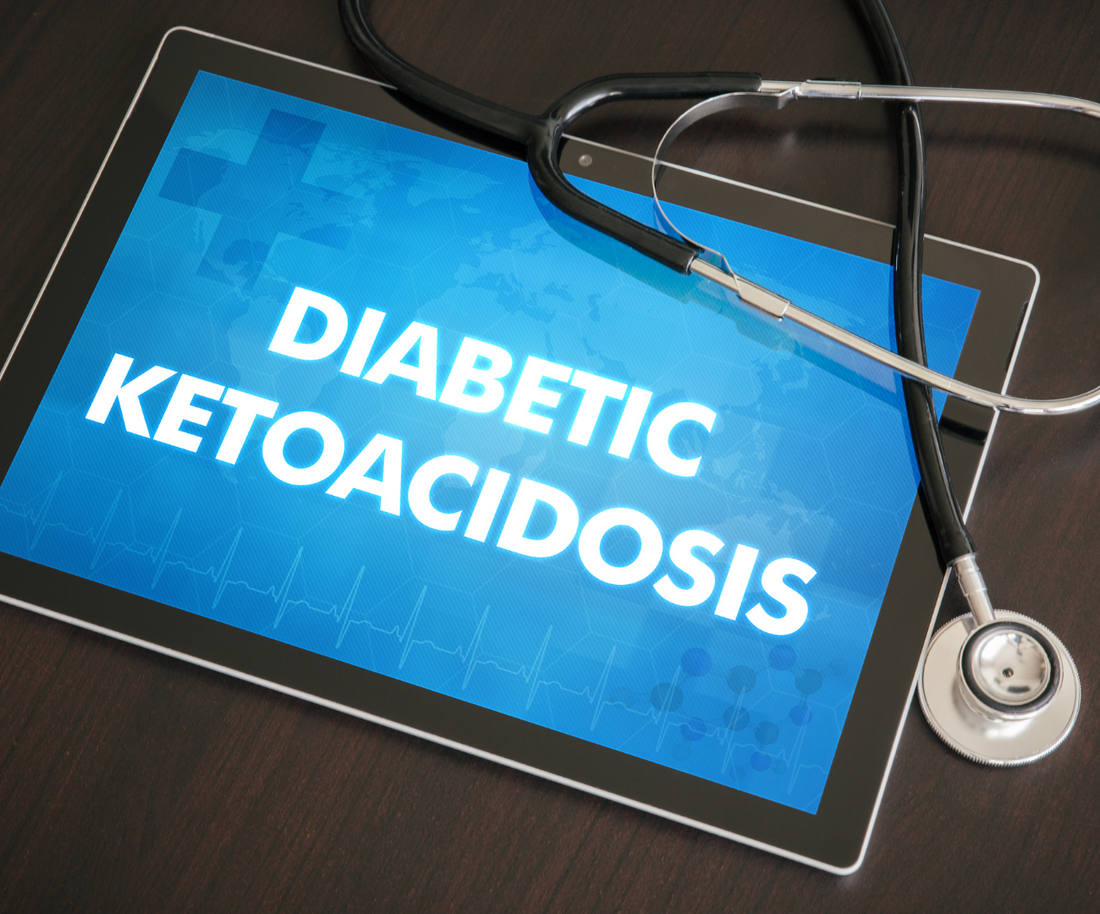Diabetic ketoacidosis (DKA) is a serious complication of diabetes that can be life-threatening if not treated promptly.
It occurs when there is a shortage of insulin in the body, which causes the body to break down fat for energy, resulting in the buildup of ketones in the blood.
DKA requires immediate medical attention, but there are steps individuals with diabetes can take to prevent its onset.
Proper DKA management is critical to prevent serious complications and ensure the best possible outcomes.
This guide will provide a comprehensive overview of DKA management.
What Is DKA?

DKA stands for Diabetic Ketoacidosis, which is a serious complication of diabetes.
DKA occurs when the body starts breaking down fat for energy instead of glucose, resulting in the production of ketones that can build up in the blood and cause a range of symptoms.
This can happen when there is a shortage of insulin in the body, such as in individuals with type 1 diabetes or some cases type 2 diabetes.
Symptoms of DKA include frequent urination, extreme thirst, dry mouth, nausea and vomiting, abdominal pain, confusion, and difficulty breathing.
DKA requires immediate medical attention and can be prevented with proper diabetes management.
Benefits Of DKA Management Charts
There are several benefits to using DKA management charts as part of a comprehensive diabetes management plan.
Here are some of the key advantages:
1. Improved Glycemic Control
One of the key benefits of using these management charts is improved glycemic control.
By tracking blood sugar levels regularly, individuals can make adjustments to their diet, exercise, and medication regimen to keep their blood sugar levels within a healthy range.
This can help reduce the risk of DKA and other diabetes-related complications.
2. Early Detection Of Potential Complications
In addition to improved glycemic control, they also enable early detection of potential complications.
By monitoring ketone levels in the urine or blood, individuals can detect early signs of DKA and seek prompt medical attention if necessary.
This can help prevent serious complications and improve overall outcomes.
3. Personalized Treatment Plans
These charts can also be customized to meet the specific needs of each individual.
Factors such as age, weight, and overall health status can be taken into account to create a personalized treatment plan that is tailored to the individual's needs.
4. Better Communication With Healthcare Providers
They can also lead to better communication with healthcare providers.
By tracking their blood sugar and ketone levels and sharing this information with their healthcare provider, individuals can work together with their provider to make adjustments to their treatment plan as needed, leading to more effective communication and better treatment outcomes.
5. Empowerment And Self-Management
Finally, using DKA management charts can help individuals feel empowered to take an active role in their diabetes management.
By monitoring their blood sugar and ketone levels regularly and making adjustments to their treatment plan as needed, individuals can feel more in control of their health and well-being.
This can lead to greater motivation to make positive changes in their diet, exercise, and overall lifestyle, which can have a positive impact on their long-term health outcomes.
Treatment Options For DKA

The treatment of DKA involves several steps and typically requires hospitalization.
The primary goals of treatment are to correct hyperglycemia, dehydration, electrolyte imbalances, and acidosis.
1. Fluid Replacement
The first step in DKA treatment is usually to replace fluids and electrolytes that have been lost due to excessive urination and vomiting.
This may involve intravenous fluids and electrolytes, which are administered in a hospital setting.
2. Insulin Therapy
Insulin therapy is necessary to lower blood glucose levels and stop the production of ketones.
Insulin is usually administered intravenously at first and then maybe transitioned to subcutaneous injections once blood glucose levels stabilize.
3. Electrolyte Replacement
Electrolyte imbalances, such as low potassium levels, are common in DKA and can lead to serious complications.
Electrolyte replacement therapy may involve the administration of potassium, sodium, and other essential minerals as needed.
4. Correction Of Acidosis
DKA is characterized by the buildup of ketones in the blood, which can lead to acidosis.
Treatment may involve the administration of bicarbonate to correct the acidosis and restore pH balance.
5. Treatment Of Underlying Conditions
In some cases, DKA may be triggered by an underlying condition such as infection or pancreatitis.
Treatment may involve addressing these underlying conditions to prevent the recurrence of DKA.
6. Monitoring And Follow-Up
Individuals with DKA will need to be closely monitored in a hospital setting to ensure that blood glucose levels, electrolyte levels, and acidosis are properly controlled.
After discharge, regular follow-ups with a healthcare provider will be necessary to ensure proper diabetes management and prevention of future episodes of DKA.
It is important to note that prevention of DKA through proper diabetes management, including regular monitoring of blood glucose levels, adherence to medication and diet regimens, and prompt treatment of any underlying conditions, is the most effective way to manage this serious complication.
Tips For DKA Management

1. Maintain Regular Blood Glucose Monitoring
Regular blood glucose monitoring is essential in preventing DKA.
Keeping a record of your blood glucose levels and identifying any patterns or fluctuations can help you and your healthcare provider adjust your treatment plan accordingly.
2. Stay Hydrated
Dehydration is a common trigger for DKA. Drinking plenty of fluids and staying hydrated can help prevent DKA.
3. Follow A Healthy Diet
A healthy diet that is rich in nutrients and low in carbohydrates can help prevent high blood glucose levels and DKA.
While it can be challenging to cut out sugar completely from your diet, reducing your intake can have a positive impact on your blood sugar levels and overall health.
One way to satisfy your sweet tooth without consuming sugar is by using natural sweeteners like Bonvia stevia zero calorie sweetener.
Stevia is a natural sweetener derived from the leaves of the stevia plant, and unlike sugar, it does not impact blood glucose levels.
Bonvia stevia zero-calorie sweetener is a great alternative to sugar and can be used in a variety of foods and beverages.
Additionally, since it has zero calories, it can help you maintain a healthy weight.
Consult with a registered dietitian or healthcare provider for personalized diet recommendations.
4. Adhere To Medication Regimen
Proper adherence to the medication regimen, including insulin and other medications prescribed for diabetes, is essential in preventing DKA.
5. Recognize And Respond To Symptoms
Early recognition and treatment of symptoms such as high blood glucose levels, excessive thirst, frequent urination, nausea, and vomiting can prevent the onset of DKA.
6. Seek Prompt Medical Attention
If you experience symptoms of DKA, seek prompt medical attention. Delays in treatment can lead to complications.
7. Develop An Emergency Plan
Develop an emergency plan with your healthcare provider for managing DKA, including steps to take if you experience symptoms and how to seek prompt medical attention.
Bonvia Stevia Zero Calorie Sweetener As An Alternative To Sugar
Are you looking for a healthy alternative to sugar that won't impact your blood glucose levels?
Look no further than Bonvia Stevia zero calorie sweetener!
1. Zero Calories
Made from the leaves of the stevia plant, Bonvia Stevia is a natural sweetener that has zero calories.
This makes it an ideal sweetener for those looking to reduce their calorie intake, maintain healthy blood glucose levels, or manage their weight.
2. Sweet
But don't let its zero-calorie status fool you – Bonvia Stevia is just as sweet as sugar! It is up to 200 times sweeter than sugar, which means you can use less of it to achieve the same level of sweetness.
And because it does not affect blood glucose levels, it is a great option for people with diabetes or those following a low-carb or ketogenic diet.
3. Simple
Using Bonvia Stevia as an alternative to sugar is easy. Simply substitute it for sugar in your favorite foods and drinks, such as coffee, tea, smoothies, and desserts.
You can even use it in baking! Just keep in mind that because it is so much sweeter than sugar, you'll need to adjust the amount you use.
4. Natural Sweetener
One of the best things about Bonvia Stevia is that it is a natural sweetener.
Unlike artificial sweeteners, which are made from chemicals and can have a bitter aftertaste, Bonvia Stevia is made from a plant and has a pleasant, sweet taste.
Plus, it is free from the health risks associated with artificial sweeteners.
Overall, using Bonvia Stevia as an alternative to sugar is a smart choice for anyone looking to reduce their calorie intake, maintain healthy blood glucose levels, or manage their weight.
It's easy to use, tastes great, and is a healthier option than sugar or artificial sweeteners.
So why not give it a try and sweeten up your life without compromising your health?
Final Thoughts
In conclusion, proper DKA management is crucial for individuals with diabetes to avoid potential complications.
By following the guidelines outlined in this comprehensive guide, including monitoring blood glucose levels, staying hydrated, and seeking prompt medical attention if symptoms of DKA arise, individuals with diabetes can take steps to prevent and treat this condition.
It is important to work closely with healthcare providers to develop a personalized DKA management plan and to educate oneself about the signs, symptoms, and treatment options for DKA.
With proper care and management, individuals with diabetes can lead healthy and fulfilling lives while reducing the risk of DKA and other diabetes-related complications.
FAQs
1. What are DKA protocols?
DKA protocols are a set of guidelines and procedures designed to manage and treat diabetic ketoacidosis (DKA), a serious complication of diabetes.
These protocols typically include specific steps to follow for the identification, diagnosis, and treatment of DKA.
Some common elements of DKA protocols include monitoring blood glucose and electrolyte levels, administering intravenous fluids to rehydrate the body, providing insulin therapy to lower blood glucose levels and reduce ketone production, and monitoring for and treating any potential complications of DKA, such as cerebral edema.
The specific details of DKA protocols may vary depending on the severity of the condition and the individual patient's medical history and needs.
Healthcare providers will work with patients to develop a personalized protocol that is appropriate for their specific situation.
2. What are the criteria for DKA?
The criteria for DKA include a combination of hyperglycemia, acidosis, and ketonemia.
This means that a person with suspected DKA will typically have a blood glucose level greater than or equal to 250 mg/dL (13.9 mmol/L), an arterial pH less than 7.3 or venous pH less than 7.25, and the presence of ketones in the blood or urine.
The criteria for DKA are used by healthcare providers to identify and diagnose DKA and are important for prompt treatment and management to prevent complications.
Individuals with diabetes need to monitor their blood glucose levels regularly and seek medical attention if they experience symptoms of DKA, such as frequent urination, excessive thirst, nausea, vomiting, and abdominal pain.

